Lieutenant Melville C. Wilkinson requests to temporarily engage in "Indian educational work" in Oregon, and Acting Secretary of the Interior A. Bell forwards and endorses Wilkinson's request to the Commissioner of Indian Affairs and the Secretary of War. In his telegraph to the Secretary of War, Bell states that Wilkinson's work will be similar…
Indian School System
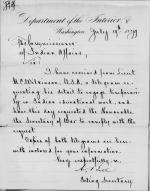
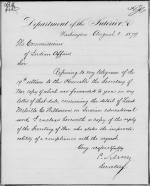
Secretary of War George W. McCrary informs Assistant Secretary of the Interior A. Bell that he does not have authority to allow Lieutenant Melville C. Wilkinson to engage in Indian education as Richard Henry Pratt is already in that line of work. Instead, Wilkinson will be sent to a college in Oregon where certain Indian youth can be sent.…
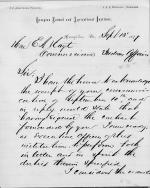
Hampton Institute Principal Samuel C. Armstrong informs Commissioner of Indian Affairs E. A. Hayt that he has signed his contract. He states that he's unhappy with the terms of the contract and describes the expense and difficulty of educating Indian students.
Note: This item was copied from U.S. National Archives microfilm reels (M234…
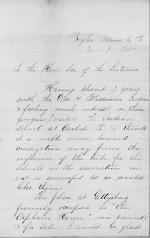
Andrew J. Koser informs the Secretary of the Interior that he visited the Carlisle Indian School, which he thinks is a "noble move toward civilization" and more effective than reservation schools. He proposes the idea of purchasing the building formerly housing the Orphans Home in Gettysburg to establish a new Indian boarding school.
…
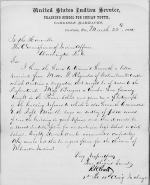
Mattie G. Reynolds writes to Richard Henry Pratt asking for a position at the Carlisle Indian School in sewing or as a sewing teacher or assistant matron. Reynolds, who formerly worked with the Pawnees in a variety of roles, additionally describes a large building that was formerly used as a manual labor school for the Pawnees. Reynolds…
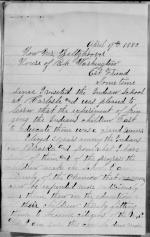
A. J. Koser informs Representative J. C. Beltzhoover that he visited the Carlisle Indian School and liked it so much that he'd like to establish an Indian school for 140 students in Gettysburg, Pennsylvania at a former Soldiers Homestead. Beltzhoover forwards Roses' letter to the Commissioner of Indian Affairs.
Note: This item was copied…
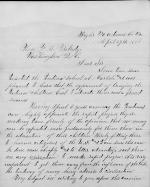
Andrew J. Koser informs Commissioner of Indian Affairs R. E. Trowbridge that he visited the Carlisle Indian School, which he thinks is a "grand success" and more effective than reservation schools. He proposes the idea of purchasing the building formerly housing the Soldiers and Orphans Homestead in Gettysburg to establish a new Indian boarding…
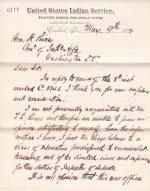
Richard Henry Pratt recommends Indian Agent John D. Miles for the new position of Inspector of Schools in the Indian Service.
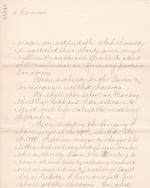
Richard Henry Pratt discusses the number of students that Carlisle can carry for the upcoming school year in 1883. He declares that the school is currently has around 320 students enrolled and can carry over 400 which he proposes to acquire from traveling West in order to select certain students who are better suited for Carlisle. In particular…
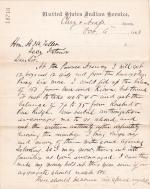
Richard Henry Pratt provides an update to the Secretary of the Interior on his recruitment of students for the Carlisle Indian School in the fall of 1883. Pratt notes that he can acquire some students from the Ponca and Nez Perce Agency, the Kiowa Agency, and the Rosebud and Pine Ridge Agencies. He also provides an update on the Pawnee Agency…
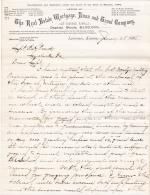
Richard Henry Pratt forwards a letter from John D. Miles about establishing an Indian School at Fort Dodge, Kansas focusing on cattle raising. Pratt writes that in his opinion the idea is not a good idea due to being located near reservations as well as the camp influences of Dodge City.
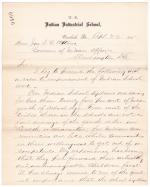
Richard Henry Pratt provides recommendations for improving the Indian School system to the Commissioner of Indian Affairs. Pratt's suggestions include educating everyone of school age compared to the quarter currently enrolled, requiring a census of school age children, and muster of students to track progress.
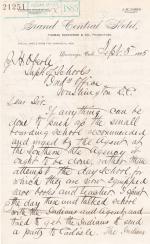
Richard Henry Pratt recommends that the school at the Southern Ute Agency be made into a boarding school rather than a day school.
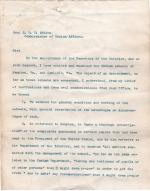
T. S. Childs makes a report to the Office of Indian Affairs on Carlisle Indian School and the Indian Training School at the Hampton Institute. Childs report was prompted by complaints made against the Hampton Institute related to the health and discipline of students. Childs report focuses mostly on Hampton while examining Carlisle in order to…
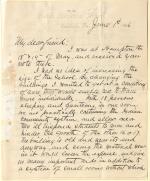
Superintendent Richard Henry Pratt writes to Doctor Cornelius Rea Agnew regarding plans for new and renovated buildings at Carlisle. Pratt states that he does not intend to take on more students, but rather to create a more individualized training environment. He compares Carlisle's Congressional funding to Congressional funding for…
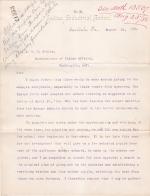
Richard Henry Pratt requests permission to recruit female students, along with his oldest daughter as an assistant, from the Cheyenne and Arapaho Agency, the Kiowa and Comanche and the Quapaw Agency, the Pueblo Agency, the Navajo Agency, and the Pine Ridge Agency. He further requests transportation expenses to be covered for himself along with…
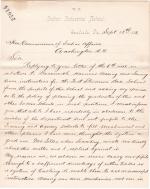
Richard Henry Pratt provides his views on having graduates from the Carlisle Indian School and other industrial training schools fill agency instructor positions. Pratt notes that he does not believe this a good system due to the lack of training among Indian apprentices in their trades which would not allow them to be competent teachers. In…
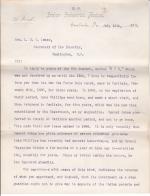
Richard Henry Pratt responds to a letter from Lucius Q. C. Lamar, Secretary of the Interior, with information about two Nez Perce students, Luke Phillips and Samuel Johns, who became ill during their second term of enrollment. Pratt notes that he believes in many cases it is better to retain students at Carlisle then send them home where he…
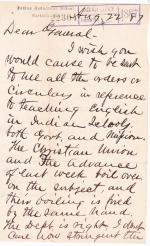
Richard Henry Pratt requests from the Office of Indian Affairs that all circulars referencing teaching English in Indian Schools be sent to him due to articles in the Christian Union and The Advance.
Pratt also writes that the bids on the building surprised him and that office should be pleased.
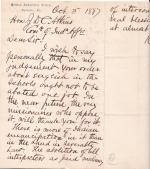
Richard Henry Pratt writes to the Office of Indian Affairs that he agrees with the office's order regarding English in the schools. He notes his disagreement with the missionaries who oppose it. He ends by noting that teaching English will lead to greater emancipation and eliminate interpreters at agencies which would be highly beneficial.
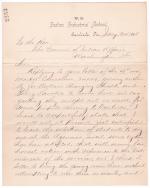
Richard Henry Pratt responds to an Office of Indian Affairs letter providing authority to transport Wallace Charging Shield and Perry Laravie while also suggesting they serve as escort for other students. Pratt then states that he does not believe individuals in agencies are currently capable of selecting students to attend the training schools…
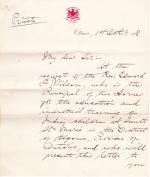
Letters of introduction for Edward F. Wilson the principal of two homes for the education and industrial training of Indian children at Sault Ste. Marie in Ontario, Canada. One of the letters is from Richard Henry Pratt who notes that he has known Wilson personally for two years and that he hopes the Office can provide a favorable introduction…
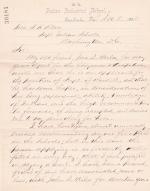
Richard Henry Pratt provides a recommendation for John D. Miles to fill the position of Superintendent of the Haskell Institute. Pratt writes that Miles had the best schools of any agency he dealt with and that Miles would be the best man for the job. Pratt ends by noting that only someone who is willing to reside at the school and give it…
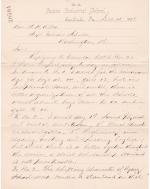
Richard Henry Pratt replies to Office of Indian Affairs circular number 21 in regards to securing pupils for the large industrial schools. Pratt provides his opinion on the eligibility of students for enrollment at Indian training schools as well as the view that the transfer should be considered a reward for the most capable students. Pratt…
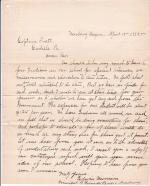
Richard Henry Pratt forwards a letter from Edwin Morrison, Principal of the Friends Pacific Academy in Newberg, Oregon, in regards to enrolling Indian students at his school.
